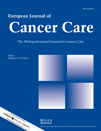The efficacy of saline washout technique in the management of exfoliant and vesicant chemotherapy extravasation: a historical case series report
The efficacy of saline washout technique in the management of exfoliant and vesicant chemotherapy extravasationa historical case series report
This report presents the results from a historical case series of cytotoxic drug extravasations managed by saline washout; its purpose is to assess the efficacy of the procedure based on patient outcome. Eighty-nine patients were identified as having experienced a vesicant or exfoliant extravasation from incident reports filed over a 10-year period, from 1 April 2001 to 31 March 2011. Outcome was measured against the need for further surgical treatment being required. Of the 89 cases assessed for efficacy of saline washout one patient experienced a wound infection, which was treated effectively with oral antibiotics. There were no other complications reported and no patients required further treatment with surgical debridement. The majority of patients had no deferral of treatment as chemotherapy could be continued in their unaffected arm immediately following saline washout procedure. For patients where cannulation in their opposite arm for continuation of treatment was not advisable chemotherapy was delayed between 3 and 7 days. Hospitalisation as a result of the extravasation or subsequent treatment was not required in any of the 89 cases. Results indicate that saline washout technique is a safe and effective management strategy for the treatment of both vesicant and exfoliant chemotherapy extravasation.




